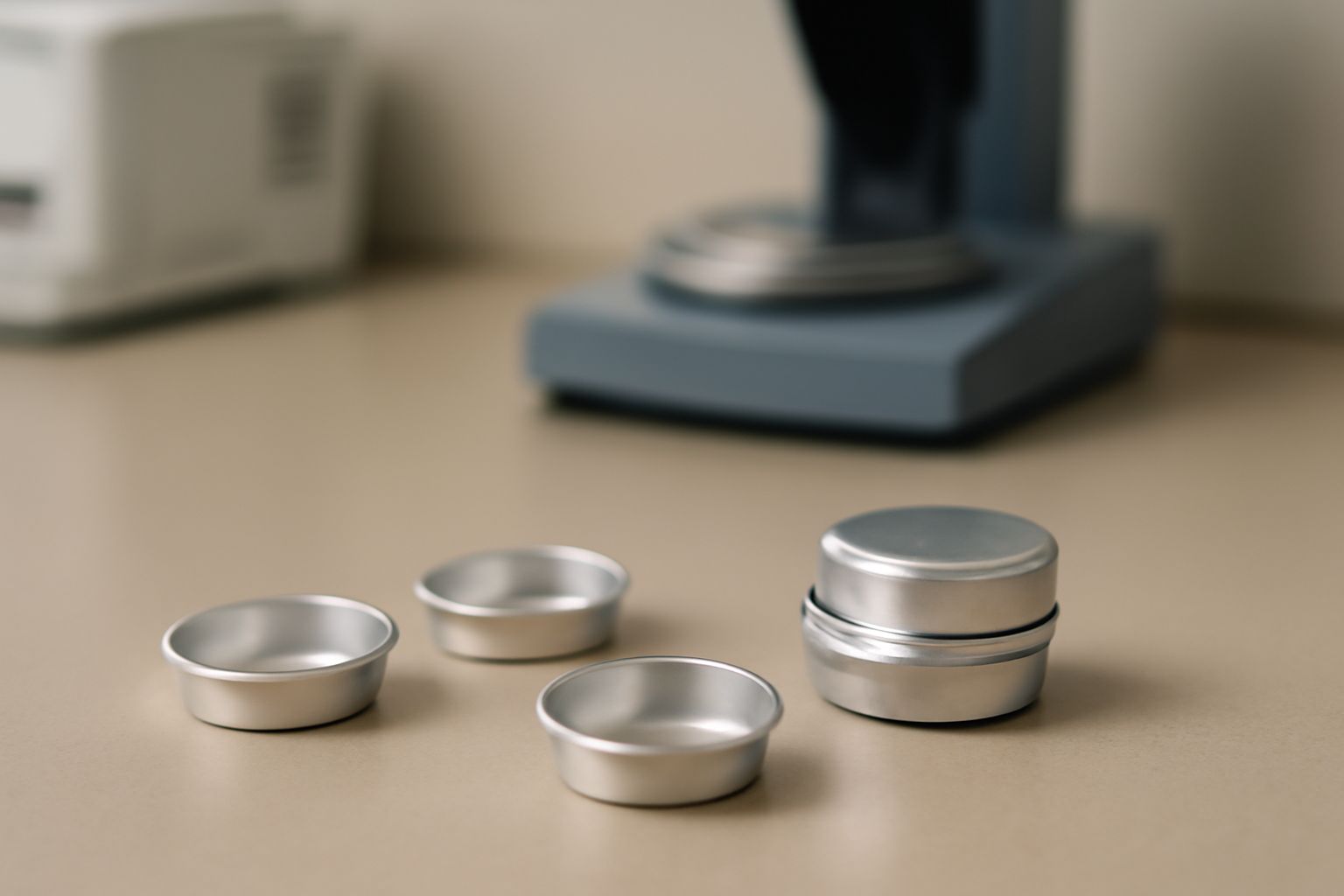Your cart is empty.
shop now
Your cart is empty.
shop now
I used to rely only on OEM DSC sample pans, but the price kept rising and limited my lab’s options. I realized that exploring cost-effective choices could change how far our research dollars go.
Switching to cost-effective DSC sample pans reduces lab expenses by up to 50%, without losing quality, when you choose the right compatible products that match your equipment needs.

Many third-party manufacturers now make DSC sample pans as reliable and consistent as the originals. I have tested brands offering compatibility with systems from TA Instruments, Mettler Toledo, and more. These alternatives lower my costs and allow for more frequent testing and bigger batch runs.
| Option | Typical Cost Compared to OEM | Benefits |
|---|---|---|
| Original (OEM) Pans | 100% | Guaranteed fit and certification |
| Compatible Pans | 50%-70% | High compatibility, reliable results, much lower price |
| Bulk or Volume Orders | 45%-60% | Extra savings for high-use labs |
I always check for technical details and supplier certifications. Look for material specifications, pan dimensions, and process documentation. According to my experience and supplier ratings, reputable third-party options save real money and perform just as well. The DSC technique does not depend on the brand, but on the physical match and purity of the pans. I monitor results closely after switching, and so far I see no measurable difference in performance. (Reference: Applied Thermal Analysis, D.K. Brown, Elsevier, 2022)
I used to pay whatever the official supplier charged, but now I look deeper for offers and cost-saving opportunities that fit my needs. It makes a real difference for my lab’s budget plan.
You can find the best deals on DSC sample pans by comparing suppliers, looking for bulk discounts, and requesting quotes for compatible products that meet rigorous technical standards.
I contact several vendors and ask for price breaks on volume purchases. I make sure to get product data sheets to check purity, size, and labeling. Some suppliers run promotions, or lower prices for academic labs or first-time orders.
| Deal-Finding Strategy | How It Saves | What To Check |
|---|---|---|
| Bulk Purchasing | Lower unit price | Only stock as much as you use in six months |
| Supplier Comparison | Competitive pricing | Ask for written technical compatibility |
| Direct Manufacturer Orders | No middleman markup | Request certification and reference customers |
I always read reviews and search for independent test case results, sometimes even posted on resources like ResearchGate. If possible, I ask colleagues or look on discussion forums for feedback about specific brands. Reliable deals exist, especially when you order ahead and negotiate for repeat business, which suppliers often welcome. The main rule: never pick price over physical or technical fit.
Finding a perfect replacement for OEM pans seemed impossible, but my work proved there are compatible options that save money and perform just as well in every critical area.
Using compatible DSC sample pans provides comparable performance to originals, supports accurate thermal analysis, and significantly reduces long-term consumable expenses in high-frequency testing.
Compatibility is about both physical fit and material quality. When you pick reliable compatible pans, you get the same test repeatability. I always match pan geometry and purity to the requirements of the DSC instrument. Many third-party pans are now available for systems from PerkinElmer, Netzsch, Shimadzu, and more.
| Compatible Pan Benefit | How It Reduces Cost | Source for Quality |
|---|---|---|
| Exact Equipment Fit | No failed runs or wasted samples | Check against brand reference charts |
| Equivalent Material Purity | Stable baselines, consistent curves | Verify purity on technical sheet |
| Ease of Bulk Orders | Lower price, faster delivery | Suppliers with ready stock like REDTHERMO |
I rely on batch testing of new pans before switching. I follow manufacturer charts and user documentation, which show how compatible pans can give equal or better performance in routine analysis. For scientific context, “Cost-Effective Approaches in Modern Thermal Analysis”, J. Lin, Wiley 2021, outlines the current third-party landscape and backs up my findings.
I sometimes tried several pan models for special applications, but it caused delays and added costs. Customizing sample pans solved these issues and simplified my purchasing in the long run.
Custom DSC sample pans satisfy unique testing needs and can lower total spend by letting labs order only what fits their method, so you avoid buying many separate pan types.
Customization lets me match pans to specific sample sizes, unusual shapes, or special sealing features. My supplier designs pans based on my drawings or requirements, which means I stock exactly what I need and nothing extra.
| Customization Solution | Cost Impact | Additional Benefit |
|---|---|---|
| Single Type, Multi-Use Pan | Less inventory needed | Simpler order system, fewer stockouts |
| Tailored Volume | Reduces sample waste | Improved sensitivity |
| Material Choice | One pan handles more samples | Optimized for high or low temperature |
I discuss needs with technical staff and get a test batch before large orders. Some suppliers even help improve my method by offering design tips or metal selection. According to recommendations from laboratory management guides, efficient custom purchasing is a proven way to reduce overhead and boost workflow in active labs. I always keep a record of test results and cost savings to guide future decisions.